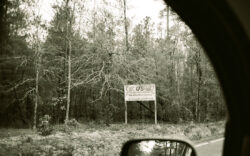Summer’s over and you’re tired of tomatoes, but that doesn’t mean you have to stop gardening. It’s finally fall! “Then, if ever, come perfect days.” (Apologies to James Russell Lowell) The temperatures are lower, and so is the humidity, while your energy level is up.
For vegetables, you know the drill: broccoli, cauliflower, cabbage, collards, onions, spinach and some lettuces to supplement your groceries until nearly Christmas.
For your flowers, trees and shrubs, Rick Berry, owner of Goodness Grows in historic Lexington, says fall is a good time to plant trees and shrubs because they’re going dormant, and they can put all their energy into growing the root system instead of the foliage. The killing heat of summer is over, but the ground is still warm and welcoming, giving the plant more time to get established before winter’s cold.
“Starting in October in Georgia,” Berry says, “any time between now and February is a good time to plant any tree or shrub.”
Dean Nelson, general manager of Cofer’s Home and Garden Showplace, agrees. “Fall is a great time to plant,” he says. “Roots that form in the ground way before it freezes have a much better chance of survival. It’s a great time for perennials and trees—maples, serviceberry, black gums and sourwood. Shrubs are great—there’s a whole host of native shrubs. And in the fall, if you miss a watering, you don’t have to panic.”
Both stress the need for water, even after the heat of summer.
Berry says it’s important to keep the root ball watered. “It behooves you to keep it from drying out,” he says, and he uses the analogy of a sponge: “Think about that sponge sitting on the kitchen sink. If it dries out, it takes a lot more water to get it wet again.”
You’ve got to water it yourself. “You can’t depend on an irrigation system, and you can’t depend on rain,” Berry says. “Irrigation might hit just the front side of the root ball, and in a rain shower, the leaves are deflecting the water from the roots. People will tell me, ‘I planted this thing, and it dried up on the back side.’ The irrigation system was just hitting it from the front.”
Hand-watering assures that the water soaks the root ball. The lower temperatures help, but water is still the key. “It takes a month or two for new roots to leave the root ball,” Berry says.
So, you have to do pretty much what you would do in summer when you’re planting new trees and shrubs—water, water, water—but the weather is inviting, and it’s easier on you and on your plants.
Nelson and Berry agree that fall is also a good time for digging up, dividing and re-setting perennials—daylilies, daisies, blackeyed Susans, etc.—that can multiply your plantings.
“We’re blessed with a great ecology here,” Berry says. “We’ve got four seasons, so a good rule of thumb for dividing perennials is if they’re spring-blooming, it’s good to divide them in the fall. Summer bloomers: divide any time they’re not in bloom: cut back, split up, irrigate. Fall planting allows the plant more time to get established—leaves, new growth, flowers. And almost any perennial and biennial— foxglove, poppies, snapdragons, pansies, English daisies—all are good for putting out in fall.”
Nelson cautions that some bulbs don’t do well in the cold ground during winter, such as cannas and gladiolus. They can be dug up and replanted in spring, but don’t let them dry out. “Store them in a cool, dry place. Then you’ll have them for planting in spring. I call ‘em ‘free flowers’,” he says.
Our moderate climate makes fall gardening inviting. Berry says, “We’re fortunate: We’ve got an extremely long growing season. In Highlands, say, there’s just one blooming period.”
Berry extolls the virtues of native species: oakleaf hydrangea, American beautyberry, fothergilla and itea, for instance. And if you want to add fruit trees, he recommends blueberries and figs. “Apples, pears and peaches require a lot of effort,” he says.
Both Nelson and Berry recommend pollinators, too, for the pleasure of the butterflies and the bees: asters, iteas, Joe-Pye weed, cardinal flower, abelia, creeping thyme.
“Any daisy-shaped flower is good for pollinators,” Berry says. “They get on that center and walk around, but they stay on one little daisy. Get some purple coneflower, and let it go to seed. Goldfinches absolutely love them.”
He adds another word of caution about water in the fall garden, especially with newly planted trees and shrubs: “Be sure to water your new plants when there’s a cold front coming, he says. You don’t want them to be dry when those low temperatures hit.”
To sum up, fall in Athens is a great time to be outside, and that happens to be where most gardening is done. So fall gardening is a natural because it is so much more comfortable outside, but the basics still apply, and there is nothing more basic to a garden than water.
Even if summer gardening is enough for you, there are a lot of things you can do in fall, like amending your soil with organic matter and increasing your mulch layers to keep that moisture in the ground. (That makes it easier to jumpstart your garden in spring, too.) Clean up, fix stuff that’s broken, collect flower seeds and enjoy your garden. Sit in the sun. Read a book. Make plans for next year, and don’t forget to weed and water.
Like what you just read? Support Flagpole by making a donation today. Every dollar you give helps fund our ongoing mission to provide Athens with quality, independent journalism.










